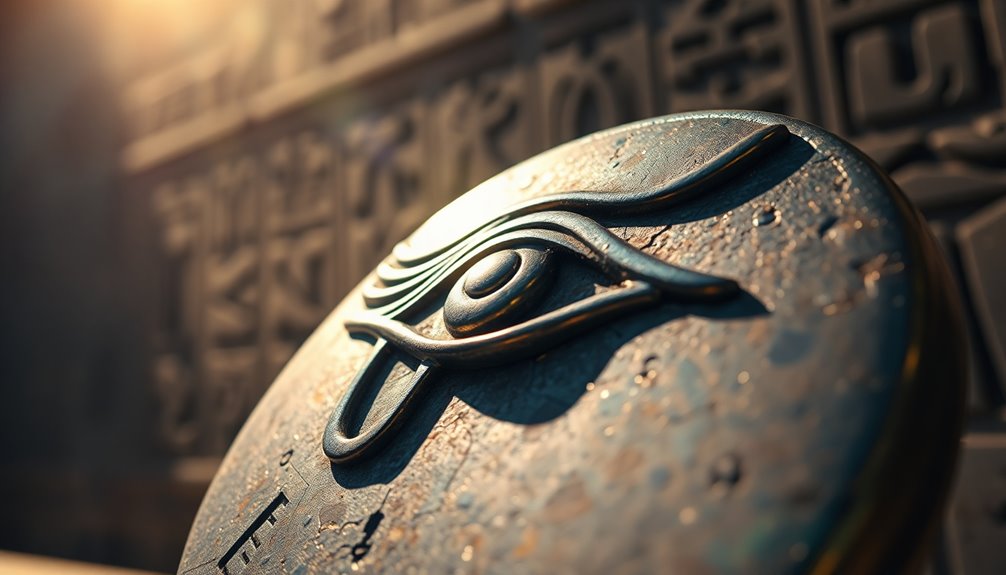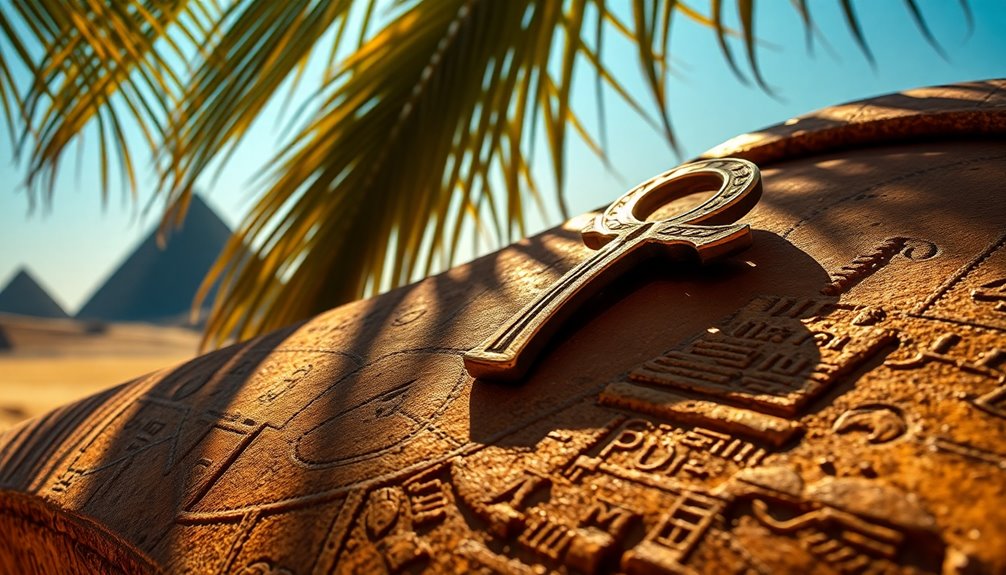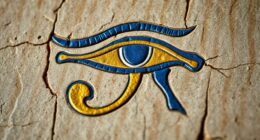Scepters serve as powerful symbols of authority, rooted in ancient cosmic and astronomical meanings. They represent divine legitimacy and connect earthly rulers with the universe’s order through celestial motifs, star symbols, and geometric patterns. Many cultures viewed scepters as mediators between heaven and earth, embodying cosmic harmony. If you explore further, you’ll discover how these objects also functioned as tools aligned with celestial events, revealing even deeper links between power and the cosmos.
Key Takeaways
- Scepters historically symbolize authority and divine right, serving as power symbols in various civilizations.
- Their designs often incorporate celestial motifs, linking them to cosmic principles and astronomical symbolism.
- Some scepters are believed to have functioned as ritual tools aligned with celestial events.
- They embody cosmic harmony, representing the universe and celestial forces governing earthly power.
- Modern interpretations view scepters as objects encoding astronomical knowledge and universal truths.

Have you ever wondered whether a scepter is merely a symbol of authority or if it has a deeper, astronomical significance? Throughout history, scepters have been more than simple emblems of power; they often carry layers of meaning rooted in ancient symbolism. In many cultures, the scepter’s design and embellishments weren’t just about regal status but also reflected cosmic principles and celestial influences. For example, some ancient civilizations believed that the scepter represented the universe’s order, with its shape and decorations symbolizing celestial bodies or cosmic forces. These interpretations weren’t random—they aimed to connect the ruler’s authority to divine or cosmic powers, reinforcing their legitimacy and spiritual authority.
Today, modern interpretations of scepters continue to explore these symbolic dimensions. While they’re still seen as icons of sovereignty, many scholars and enthusiasts see them as more than mere physical objects. Instead, they view scepters as repositories of ancient symbolism that encode astronomical knowledge. For instance, some designs incorporate star motifs, planetary symbols, or geometric patterns aligned with celestial events, suggesting a link between earthly leadership and the cosmos. This perspective shifts the understanding of the scepter from a simple badge of power to a meaningful artifact that embodies universal principles.
You might notice that the scepter’s form often echoes ancient astronomical tools or symbols—like the staff representing a guiding star or a celestial pole. These design elements aren’t accidental; they echo the idea that rulers served as earthly counterparts to celestial beings or as mediators between heaven and earth. Such symbolism reinforced the divine right of kings, emphasizing that their authority was rooted in cosmic order rather than human decree alone. Additionally, the integration of astronomical motifs in royal regalia underscores how ancient cultures often linked power with the universe’s cosmic principles, seeking to legitimize authority through celestial harmony.
In contemporary times, the fascination with the astronomical significance of scepters persists, especially among historians and mystics. Some see them as ancient tools that encoded astronomical knowledge—used in rituals or ceremonies aligned with celestial events. Others interpret them as symbolic representations of the universe itself, embodying the cosmic principles that govern existence. Whether viewed through the lens of ancient symbolism or modern reinterpretation, the scepter remains a powerful object that bridges the terrestrial and the celestial, hinting at a universal truth: that power, at its core, may be rooted in cosmic harmony and celestial influence.
Frequently Asked Questions
Are Scepters Found in Cultures Outside of Ancient Egypt and Greece?
You might wonder if scepters appear outside ancient Egypt and Greece. The answer is yes; ancient Chinese artifacts include scepters symbolizing authority, and South American relics feature similar ceremonial staffs. These objects served as symbols of power and authority across diverse cultures, showing that the concept of a scepter wasn’t limited to one region. You’ll find that many civilizations used them to represent leadership, influence, or spiritual significance.
How Do Scepters Compare to Other Royal or Ceremonial Symbols?
Imagine holding an ornate scepter, its gold surface gleaming, symbolizing your authority like a shining beacon. Compared to other royal symbols, scepters serve as tangible markers of symbolic authority and ceremonial functions, often adorned with intricate gemstones. While banners or crowns convey status visually, scepters embody active power and leadership, making them unique among royal or ceremonial symbols that reinforce your role and prestige in a commanding, physical way.
Can Scepters Be Linked to Specific Astronomical Events or Constellations?
You might wonder if scepters are connected to celestial alignments or constellation symbolism. It’s possible that their designs incorporate stars or specific constellations, reflecting divine or cosmic authority. Ancient cultures often linked royal symbols to celestial events, enhancing their significance. So, when you see a scepter, consider its potential ties to astronomical phenomena, symbolizing power rooted in celestial influence and cosmic order.
What Materials Were Commonly Used to Craft Ancient Scepters?
Imagine holding a treasure chest—ancient scepters were crafted from precious metals like gold and silver, which symbolize wealth and power. You’ll also find decorative gemstones such as emeralds, sapphires, and rubies, adding splendor and significance. These materials weren’t just for beauty; they conveyed authority and divine right, making the scepter a symbol of leadership and prestige in ancient civilizations.
Have Modern Scientists Discovered New Functions for Scepters Beyond Symbolism?
Modern scientists have explored new functions for scepters through scientific experiments and technological advancements. You might find that some researchers are investigating their potential in fields like magnetism, energy transfer, or even as symbols in advanced technology. These studies aim to uncover practical uses beyond symbolism, revealing that scepters could serve as tools in innovative scientific applications. Your curiosity drives the exploration of how ancient symbols can inspire modern technological progress.
Conclusion
So, next time you see a scepter, ask yourself: is it just a symbol of authority or could it also be a glimpse into ancient astronomy? Could those elaborate designs and shapes actually represent celestial bodies or cosmic knowledge? Whether it’s a sign of power or a tool for understanding the stars, one thing’s certain—you can’t ignore its mysterious dual purpose. Isn’t it fascinating how history blends symbolism and science in such a powerful way?











